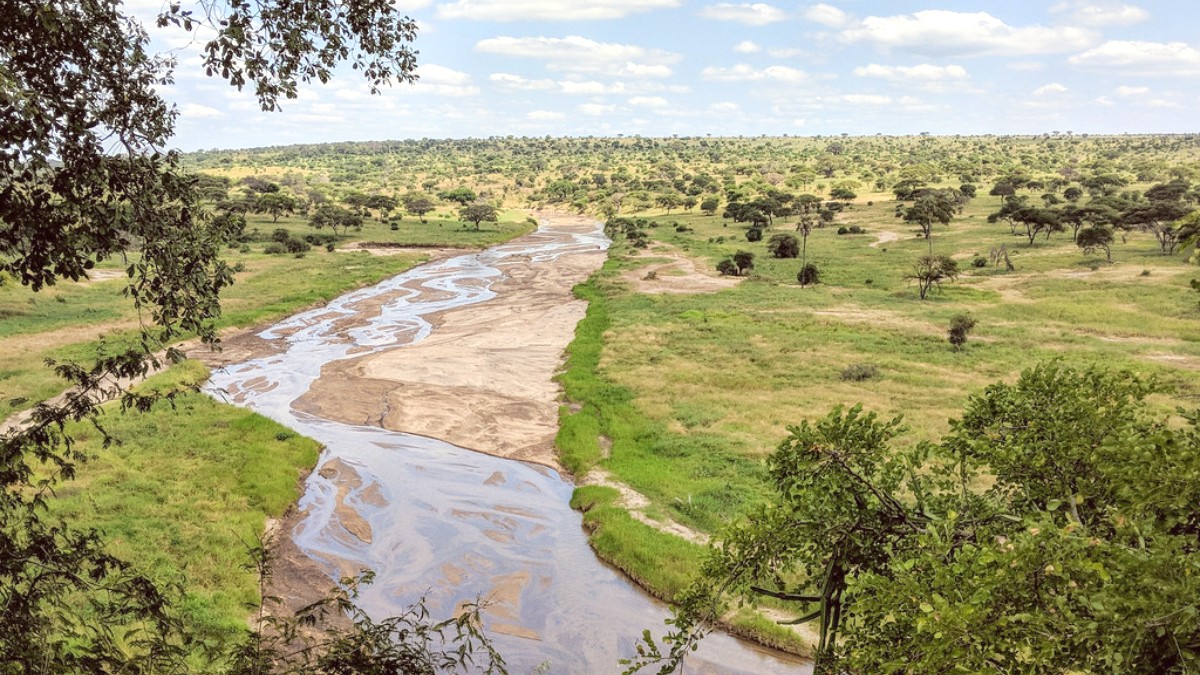
Northern Tanzania, Tanzania
Arusha calls with adventure. Imagine waking to the crisp mountain air, a grand view of Mount Meru dominating the skyline, and the distant, often cloud-shrouded peak of Mount Kilimanjaro offering a majestic presence. This is the daily reality in Arusha, a city that pulsates with the energy of explorers and local residents alike. Every corner is a story, from bustling markets overflowing with colorful fabrics and fragrant spices to quiet pathways leading to serene coffee plantations.
Your journey into the heart of Tanzania's wild side begins here. Arusha serves as the launchpad for safaris into world-renowned national parks like the Serengeti and the Ngorongoro Conservation Area, places synonymous with abundant wildlife and breathtaking natural spectacles.
Arusha brings these dreams to life, linking travelers directly to the wilderness. Beyond wildlife, the city itself offers a mosaic of experiences. Step into a local "mama ntilie" eatery for authentic Tanzanian cuisine or engage with local artisans.
Arusha is a prime position in northern Tanzania, a location defining much of its character and purpose. It sits at approximately 1,400 meters (4,600 feet) above sea level, nestled on the eastern slopes of the towering Mount Meru. This stratovolcano forms a dramatic backdrop, often verdant and mist-shrouded. The city also offers views of the iconic Mount Kilimanjaro to the northeast, adding to its picturesque setting and appeal for adventurers. This elevation also plays a role in the city's weather patterns, influencing rainfall and temperature variations throughout the year.
The city serves as the administrative capital of the Arusha Region, a large and diverse area encompassing a wide range of ecosystems, from arid plains to lush mountain forests. Arusha serves as a hub for services, commerce, and communication for a broad surrounding population. Its strategic placement has made it a logistical center for agriculture, especially coffee and flower plantations, which thrive in the rich volcanic soils of the highlands. The city’s economy benefits from these agricultural pursuits, with local markets and trade centers reflecting the produce from the fertile lands.
Celebrated for the Great Migration and its high concentration of predators.
Home to the Ngorongoro Crater, a natural wonder teeming with wildlife.
Known for its large elephant herds and ancient baobab trees.
Recognized for diverse birdlife and tree-climbing lions (though rare to spot).
Located on the city's doorstep, offers walking safaris, canoeing, and Meru views.
Most safari adventures in northern Tanzania start or end in Arusha due to this geographical advantage. Tour operators, accommodation, and safari services are here, making it a suitable base for wildlife expeditions. The road network connecting Arusha to these parks, while sometimes challenging with unpaved sections, allows for overland journeys that immerse travelers in the changing landscapes.
Proximity to Kilimanjaro International Airport (JRO) further reinforces Arusha's role as an international entry point, solidifying its position as a travel nexus for the region.
This region combines outdoor activity and cultural richness, inspiring every traveler. Prepare to discover a destination that truly captures the spirit of East Africa. It provides an immersive experience, inviting you to connect with the land, its people, and its incredible wildlife.
Arusha serves as an entryway to the wild heart of Tanzania and offers an engaging experience in its own right. Expect a blend of adventure, culture, and a genuine connection to East African life.
Arusha's history is a layered narrative reflecting colonial ambitions, a struggle for independence, and a commitment to pan-African unity. German colonists founded the city in 1900, establishing it as a center for colonial administration in what was then German East Africa.
Its elevated position and fertile lands proved suitable for agriculture, specifically for coffee, a cash crop that became an economic driver. The German presence brought initial infrastructure, including administrative buildings like the "Boma" (now the National Natural History Museum), which remain architectural reminders of this early period.
After WWI, German East Africa transferred to British mandate, renamed Tanganyika. Arusha continued its development, solidifying its status as a trading and agricultural hub under British rule.
In 1967, Julius Nyerere promulgated the Arusha Declaration, outlining Tanzania's socialist development policy, Ujamaa. It promoted self-reliance and collective ownership.
From 1994 to 2015, Arusha hosted the ICTR, established by the UN to prosecute Rwandan genocide individuals, giving the city a cosmopolitan feel.
Today, Arusha is not only a thriving tourist center but also the headquarters of the East African Community (EAC), a regional intergovernmental organization comprising seven partner states.
Arusha is the undisputed starting point for safaris into the Northern Circuit parks, attracting a constant flow of travelers eager to experience Tanzania's famous wildlife.
Its status as the headquarters of the EAC lends Arusha an international flavor, with diplomats and international workers contributing to its cosmopolitan character.
The surrounding fertile lands are famous for their coffee and flower plantations, providing a stable foundation for the city's economic activities and shaping the landscape.
Markets buzz with activity, selling fresh produce, spices, colorful fabrics, and handmade crafts.
The sounds of "dala-dalas" (local minibuses) ferrying passengers, street vendors, and ubiquitous "Jambo" greetings create a symphony of everyday life.
Despite its rapid growth, Arusha retains a welcoming charm with friendly people and proximity to awe-inspiring natural wonders.